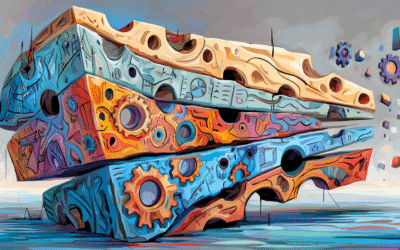Pink asked a question that stopped people mid-scroll: “If Charlie Kirk is Freedom, what is Dianne Keaton?”
It came just days after Donald Trump posthumously awarded Charlie Kirk the Presidential Medal of Freedom, calling him “a fearless advocate for liberty.” And almost at the same time, Dianne Keaton died at seventy-nine, the world remembering her eccentric brilliance, her hats and laughter, her capacity to make intelligence look effortless.
Two names, two headlines, one country telling two stories about what it values.
The spectacle of freedom
To understand why anyone might see Charlie Kirk as “Freedom,” you have to think in symbols, not politics. Myths are shorthand for what a culture admires about itself.
Kirk’s myth is the unfiltered speaker – the rebel who says what others won’t. His rise came through confrontation: campus debates, talk-radio circuits, endless online sparring. He treated outrage as evidence of courage. In Trump’s framing, that defiance became virtue. The medal rewarded the act of speaking itself, not the content of what was said.
This is the old American archetype – the frontier individualist remade for the digital age. Freedom means refusal. The measure of liberty is how little you let anyone stop you. It’s an intoxicating idea, and it always needs an enemy to stay alive.
That’s why Pink’s question hit a nerve. If that version of freedom – loud, oppositional, sanctified by outrage – now wears the nation’s highest honour, what happens to the quieter kind?
The quiet revolution
Dianne Keaton’s freedom was almost invisible until you looked closely. It didn’t shout. It invited.
From Annie Hall onward, she changed the emotional range of what a woman could be on screen. She was funny without cruelty, beautiful without compliance, serious without solemnity. Her voice stuttered between intellect and instinct; her clothes rewrote femininity with a wink. She made awkwardness magnetic.
Across six decades she kept evolving – actor, director, photographer, preservationist — and she aged publicly, refusing to disappear. Each reinvention was its own lesson in permission: the freedom to stay curious, to keep becoming.
Her autonomy wasn’t rebellion but coherence. She belonged entirely to herself.
Through her, generations learned that contradiction is human, not shameful. That intellect and affection can live in the same sentence. That you can care deeply without performing certainty. She gave culture a model of freedom rooted not in resistance, but in self-respect.
Two archetypes of liberty
Kirk and Keaton stand as twin mirrors of an anxious age.
One represents freedom as defiance – external, reactive, loud.
The other, freedom as authenticity – internal, integrative, calm.
One needs to win. The other simply needs to exist.
The first can dominate a headline; the second shapes lives quietly from within. It’s the difference between using freedom to claim territory and using it to claim oneself.
Keaton’s influence endures because it invited participation. She expanded the emotional vocabulary available to ordinary people. Her art told viewers: you don’t have to choose between intelligence and warmth, between order and imagination. That kind of permission shifts culture far more than any speech.
What the medal and the mourning reveal
When a nation crowns one and mourns the other in the same week, it reveals its internal split. It still can’t decide whether freedom is the power to shout or the peace to be.
The first kind of freedom builds movements. The second builds maturity.
The first measures itself through conflict. The second through integrity.
Both are necessary, but only one can sustain democracy. Liberty without empathy curdles into nihilism; empathy without liberty collapses into fear.
Kirk’s supporters sense something real – the danger of speech constrained by moral fashion. Keaton’s admirers sense another truth – that liberation without reflection hollows into noise. Between them lies the frontier that matters most: how to be free with others, not just from them.
The gendered undertone
Freedom in America has long been coded masculine – aggressive, competitive, territorial. Keaton embodied a feminine counter-myth: relational, expressive, still firm. She modelled how freedom could coexist with kindness.
These aren’t opposites but counterparts. A culture breathes through both lungs. When only one is valued, the whole system strains.
Her passing therefore feels larger than celebrity loss. It marks the fading of a generation that practised autonomy through nuance rather than confrontation. People who believed you could live truly without making enemies of those who didn’t understand you.
The quiet endurance
Long after the rhetoric fades, Keaton’s presence will remain in gestures – a loose-fitted blazer, a laugh that interrupts itself, an artist who keeps starting over. She made individuality ordinary. She turned quirk into permission.
Cultural change often arrives disguised as personality. Keaton’s life said that freedom isn’t a declaration; it’s a daily rhythm of self-alignment. No ceremony required.
The moral of the question
So if Charlie Kirk is Freedom, what is Dianne Keaton?
She might be Grace. Or maybe Freedom grown up.
Kirk embodied liberty as conquest – freedom as “mine.”
Keaton embodied liberty as presence – freedom as “me.”
One demands applause; the other commands quiet notice.
One burns fast; the other endures.
And perhaps that’s the answer hiding in Pink’s question. Freedom that feeds on conflict cannot sustain itself. Freedom that roots in authenticity renews quietly, generation after generation.
The closing image
Their stories now belong to history, but the contrast remains alive. One was honoured for speaking; the other remembered for being. One made freedom sound fierce; the other made it feel kind.
Together, they reveal the fault line running through the culture – between the freedom that demands attention and the freedom that commands respect.
If Charlie Kirk is Freedom, Dianne Keaton is its conscience.
And conscience, unlike applause, doesn’t fade when the lights go down.



